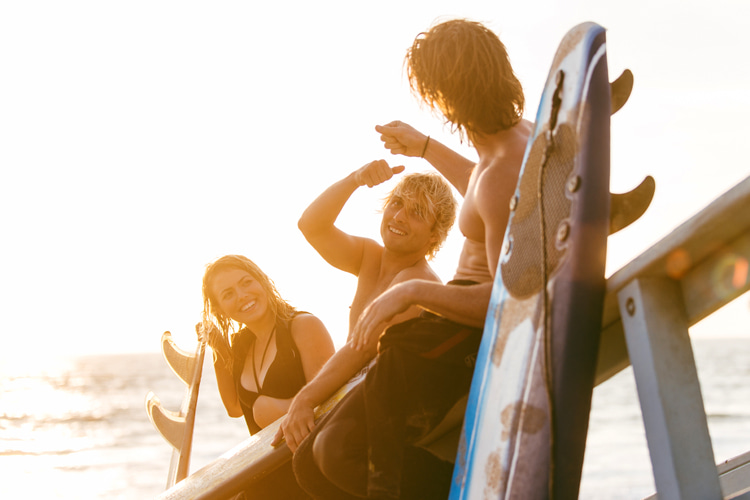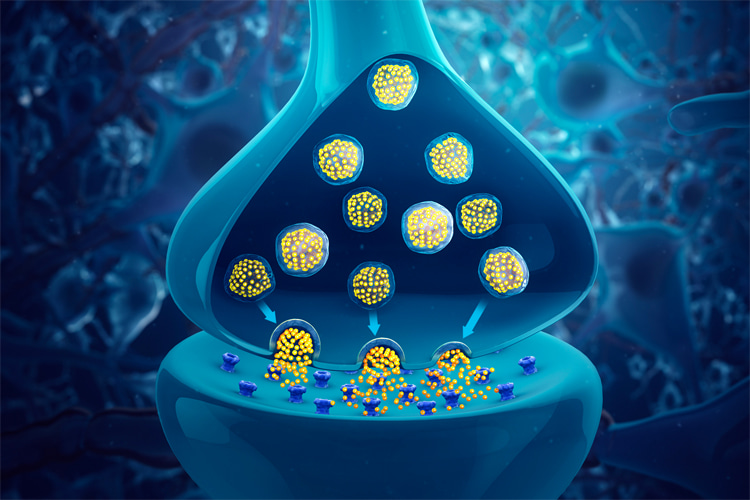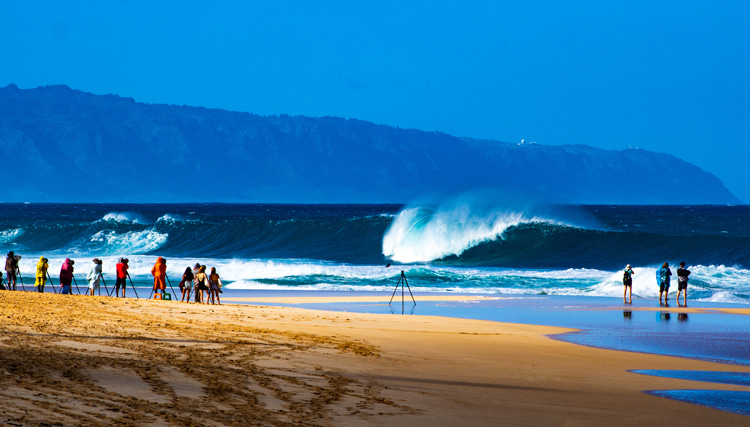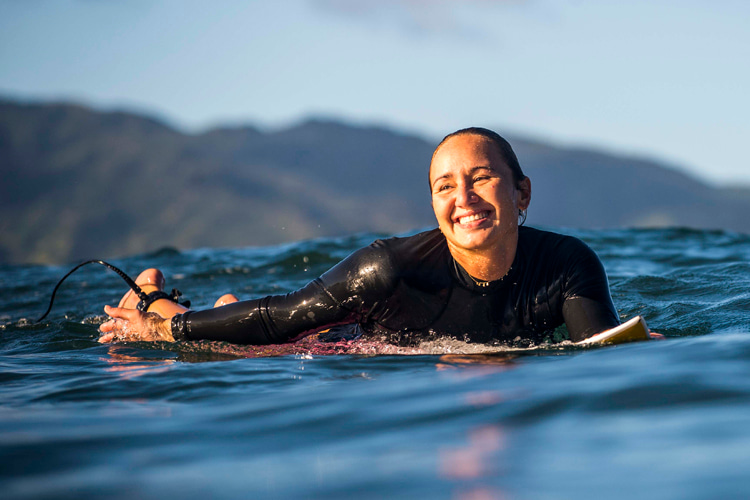There is a lot going on in our brains when we surf. But why do surfers experience that happy, feel-good sensation after a fruitful wave-riding session?
The profound mood-enhancing power of sports and physical activities isn't a mere notion - it's backed by substantial scientific evidence.
They not only mold our bodies but also reshape our minds, temper our stress, lighten our moods, and even alleviate physical pain.
Someone once said, "The human body is meant to move, and when it does, the mind, spirit, and emotions move with it."
One sport that epitomizes this interplay between physical and mental well-being is surfing.
By now, you should probably already know that surfing is actually prescribed as a form of therapy for young children and people suffering from depression and post-traumatic stress disorder (PTSD).
It's true. Waves heal us - one at a time.
An iconic oceanic activity, surfing provides an adrenaline-charged confrontation with nature's forces that leaves its enthusiasts both physically challenged and mentally recharged.
But what is the science behind the feel-good experience that surfers often report?
Why is it so pleasurable, enjoyable, and addictive? Why are surfers always so happy?
Let's find out.
The Neurochemistry of Surfing: Endorphins, Dopamine, and Serotonin
The euphoria that surfers experience after riding waves can be attributed to certain neurotransmitters and organic chemicals that our brains release during physical exertion.
Among these substances are endorphins, dopamine, and serotonin - often referred to as the body's "happy chemicals."
In addition, adrenaline and norepinephrine, hormones related to the body's fight-or-flight response, are also released during surfing.
They contribute to the heightened state of arousal and exhilaration surfers often feel when tackling the waves.
Here's how they boost our mood:
Endorphins
Endorphins are hormones that our brain and nervous system generate.
They carry out many bodily functions, but most importantly for our context, they're pivotal in managing our pain sensation and provoking a sense of intense happiness, akin to the effect of the medication morphine.
Activities like surfing, which demand physical exertion, instigate stress in the body.
To balance this, your body starts producing endorphins.
These endorphin molecules latch onto specific sites known as opiate receptors distributed throughout the body, predominantly in regions responsible for processing pain.
This pairing of endorphins with opiate receptors incites a positive bodily sensation, often described as pure joy, coupled with an optimistic and stimulating perspective on life.
This natural joy, frequently referred to as "runner's high," is one of the primary ways endorphins assist us in dealing with physical effort or strain.
Dopamine
Dopamine is classified as a neurotransmitter, a chemical agent that helps transmit signals in the brain and other body parts.
It holds critical roles in numerous bodily functions.
In the heart of mood and gratification, dopamine has a central role.
It's frequently dubbed the "feel-good" neurotransmitter due to its involvement in inciting feelings of enjoyment and reward.
When your brain anticipates a reward, such as successfully catching a wave while surfing, it prompts a release of dopamine.
In our brain, dopamine operates by latching onto dopamine receptors.
This process is fundamental to many everyday behaviors, such as motivation and memory.
When we succeed in a task or goal, our brain rewards us with a dopamine release, eliciting feelings of bliss and encouragement, thereby motivating us to replicate the rewarding behavior.

Serotonin
Serotonin is a hormone and a neurotransmitter with several roles in the body. It's derived from an essential amino acid known as tryptophan.
Most of it is found in the brain, intestines, and blood platelets.
Serotonin is renowned for its function in moderating mood and social conduct.
It also oversees appetite, digestion, sleep, memory, sexual desire, and performance.
Concerning mood, serotonin aids in transmitting signals from one brain area to another.
It affects brain cells both directly and indirectly.
Due to its broad influence, serotonin is deemed to assist in mood regulation, and a surge in serotonin activity often produces an effect similar to antidepressants.
A class of drugs used predominantly to address depression, known as selective serotonin reuptake inhibitors (SSRIs), operate by augmenting the brain's serotonin.
They achieve this by preventing the neurons from reabsorbing serotonin, allowing for more serotonin availability.
This results in increased serotonin available to pass further messages between neighboring nerve cells.
SSRIs are labeled as selective since they mainly affect serotonin and not other neurotransmitters.
Activities like surfing and exposure to sunlight can naturally enhance serotonin levels, hence providing feelings of satisfaction and a sense of well-being.
Adrenaline
Adrenaline, or epinephrine as it's also known, is a hormone that our adrenal glands manufacture when we're in situations of intense stress or excitement.
This potent hormone is part of our body's immediate stress response system, commonly termed the "fight or flight" response, priming the body for intense physical activity.
While surfing, the exhilaration of maneuvering a wave, especially a substantial one, can assuredly provoke the release of adrenaline.
Adrenaline quickens your heart rate, narrows blood vessels, widens air passages (permitting more oxygen to reach the muscles), and enlarges pupils.
This sudden surge of adrenaline provides a brief period of enhanced abilities and sharp awareness.
This can be critical when maintaining balance on a rapidly moving wave or when you need to surface quickly after a wipeout.
Norepinephrine
Also known as noradrenaline, norepinephrine is both a neurotransmitter and a hormone.
It has a close relationship with adrenaline and is released during the body's "fight or flight" response, having a pivotal role in our immediate stress reaction.
Norepinephrine is chiefly involved in the final stages of preparing the body for action.
It facilitates a heightened state of alertness and concentration.
During surfing, this helps the surfers stay attuned, maintaining an acute awareness of their surroundings and the ability to swiftly and efficiently respond to the ocean's ever-changing conditions.
Moreover, adrenaline and norepinephrine can contribute to the exhilarating "high" or feelings of joy that can transpire during and after surfing.
The thrill of the sport, paired with the natural environment's allure, can stimulate a powerful blend of physical and emotional reactions that many find immensely gratifying.

The Bonus: Negative Ions
The ocean offers the perfect playground for surfers and gives them exposure to a wealth of negative ions - tiny air particles that have gained an extra electron.
Negative ions are found in abundance near waterfalls, forests and, yes, breaking ocean waves.
According to multiple studies, these ions can boost mood, stimulate the immune system, and improve alertness.
This is because they increase the flow of oxygen to the brain and balance serotonin levels, offering a natural antidepressant effect.
So, when surfers hit the waves, they're not just interacting with the ocean. They're also soaking in a sea of mood-boosting particles.

Brainwaves and Wave-Riding
Our brains generate electrical activity patterns, often called brainwaves.
These waves change depending on what we're doing and how we're feeling.
There are five types of brainwaves.
- Gamma Waves (30-100Hz): These are the fastest brainwaves and are associated with high-level information processing and learning. Gamma waves can become more active when we're fully engaged in the present moment, as we often are when surfing;
- Beta Waves (13-30Hz): Beta waves are associated with normal waking consciousness. They come into play when we're focused on tasks, problem-solving, or decision-making. While surfing, maintaining balance, and deciding the best way to ride a wave can stimulate beta wave activity;
- Alpha Waves (8-13Hz): These are slower than beta waves and are typically associated with a state of relaxed alertness, often found in meditation or during light relaxation. As surfers patiently wait for the next wave, the tranquility, and focus might induce alpha wave activity;
- Theta Waves (4-8Hz): Even slower are the theta waves, which are linked with deep relaxation, meditation, and creativity. They tend to occur during daydreaming or when we're immersed in something we love doing. Surfing, which for many is a deeply loved hobby, may provoke theta wave activity;
- Delta Waves (0.1-4Hz): The slowest of all, delta waves, are associated with deep, dreamless sleep. While it's unlikely that delta waves are linked to the active part of surfing, the deep relaxation after a surf session might lead to a more restful sleep, enhancing delta wave activity;
When surfers are out in the ocean, they are typically in a relaxed yet focused state.
This blend of relaxation and alertness can shift brainwave activity from the high-frequency beta waves towards the lower-frequency alpha and theta waves.
This shift is often associated with decreased stress, enhanced creativity, and improved emotional connection - all contributing to the holistic, feel-good experience of surfing.
